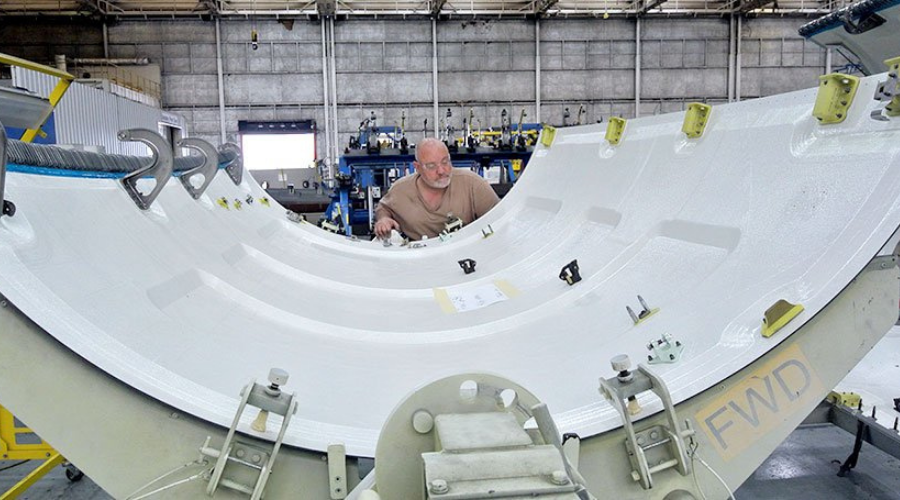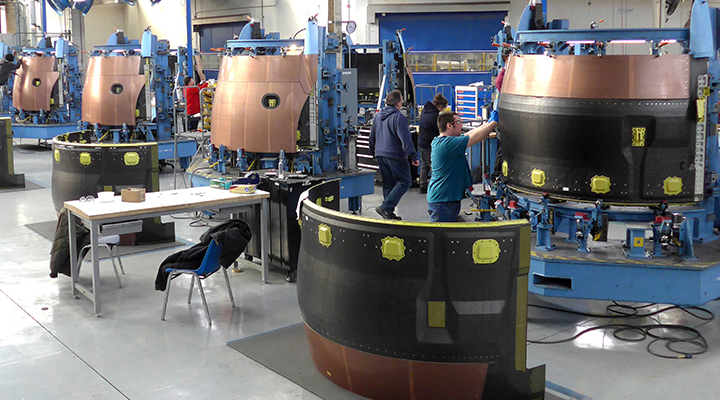
Environmentally friendly high-performing nacelles
With strong capability, comes great responsibility. This is what we believe in when it comes to leveraging our design and engineering expertise to incorporate sustainable and environmentally friendly features into our aviation products, in our quest to provide greener solutions for the increasingly environmentally conscious aviation industry.
Greener nacelles through collaboration with engine OEMs
Making our aircraft engine nacelles greener is one such endeavor. Through our MRAS, which specialises in the development, production and sale of engine nacelle systems used on commercial and military aircraft, we have been innovating our nacelles to help trim aircraft fuel consumption and carbon emissions. Increasingly, we have been collaborating with engine OEMs from the design stage to develop integrated propulsion systems with lower weight, less fuel burn, less community noise yet with better aerodynamics.

We are currently involved with two such nacelle systems: one is the GE Passport engine on Bombardier’s Global 7500 business jet, with some 200 nacelles delivered to date, while the other is CFM International’s LEAP-1C engine for the COMAC C919 jetliner, which is completing its flight test and certification programme for entry into service. Both programmes are developed with Safran Nacelles through our Nexcelle joint venture.
Making these nacelles greener involve new material and innovative designs. For Bombardier’s Global 7500 business jet, we have optimised the nacelle’s inlet and fan cowl by utilising composites substantially, including on the large two-piece fan cowl doors that facilitate access to the engine for inspection and maintenance.
To enhance aerodynamics of the C919 LEAP-1C engine, we have narrowed the overall pylon structure. Pinning the inner fixed core cowl to the pylon to eliminate large duct sidewall and beam structure shaves off some weight and drag. To reduce community noise, the inlets are created using a proprietary process to splice honeycomb core together. These acoustically transparent splices will not compromise the benefit of the inlet acoustic liners.
Other nacelle refinements
Further to these nacelles, we have also refined others. For the LEAP-1A engine powering A320neo, we cut the nacelle’s weight by replacing components that are traditionally metallic with composites, for example the beavertail fairings.

For the GEnx-2B used on Boeing 747-8 aircraft, an acoustic attenuation system with two degrees of freedom is located in the fan duct outer wall composite bond and attenuates engine noise over multiple frequencies. A trailing edge feature called “chevrons” is used on the thrust reverser’s translating cowl, reducing noise by optimising the mixing of secondary engine flow with the surrounding air.
All these design features were developed through our independent research and development. Each design innovation, by itself, saves less than 1% in fuel burn and CO2 emissions, and adds up eventually to become part of the overall effort to cut fuel burn and emissions progressively on new aircraft.
Do you know?
In general, after a given nacelle design has been approved for aircraft or engine application, that same nacelle design will be used when the nacelle needs repair or replacement. This is despite nacelle specific retrofittable changes to improve fuel efficiency or community noise.
That said, as an OEM that supplies and supports nacelle products for engine makers, airplane manufacturers and aircraft operators, we continuously look for ways to introduce technology for product enhancements that bring up performance and value.
Subscribe to our newsletter
Copyright © 2025 ST Engineering
By subscribing to the mailing list, you confirm that you have read and agree with the Terms of Use and Personal Data Policy.

